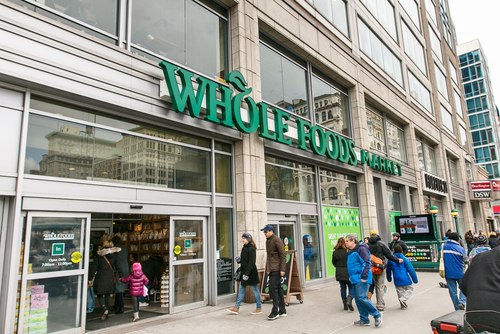What Amazon's Whole Foods Purchase Teaches Marketers Everywhere



Amazon’s purchase of Whole Foods, the latest move in its retail-domination strategy, has us asking a new batch of questions. What does this new acquisition mean for the average customer? For the grocer? For the retailer? For the marketer? No matter what industry you come from, marketers everywhere
Amazon’s purchase of Whole Foods, the latest move in its retail-domination strategy, has us asking a new batch of questions. What does this new acquisition mean for the average customer? For the grocer? For the retailer? For the marketer?
No matter what industry you come from, marketers everywhere can learn a lot from this recent headline-making acquisition. Below are just four:
1. Customer Obsession Should be at the Heart of Everything You Do
No one besides Amazon CEO Jeff Bezos has a crystal ball for what the future of grocery retailing holds. Bezos himself has, however, given us all a hint. In his 2016 Letter to Shareholders he spoke about “true customer obsession” and said, “Even when they don’t yet know it, customers want something better, and your desire to delight customers will drive you to invent on their behalf.” It was this “customer obsession” that was the genesis for Amazon Prime. No customer asked for it, but many now cannot live without it.
2. Add Value at Every Step
We believe Bezos himself has given us all the key to how to compete in this ever-changing marketplace. It goes beyond grocery and touches all organizations: retail, healthcare, financial services B2B and even taxis competing with ride-sharing services. The key is true customer obsession and adding value every step of the way.
3. A Revolution Requires More Than Price Cuts
Joe Cahill from Crain’s wrote that solving two main challenges will allow for a grocery revolution: the creation of a delivery-based online business model and winning large numbers of customers away from their favorite food stores. While known for undercutting its competition, Amazon will not revolutionize an entire industry with price cuts alone. It will need to solve for the logistics of delivering perishable and temperature-sensitive food items while delivering on particular customer preferences (consider your own penchant for green versus yellow bananas) to advance the position of online grocery sales. Further, even combined, Amazon Fresh and Whole Foods today both represent a small portion of the overall grocery market, so Amazon has a long road ahead if it wants to dominate.
4. Make it Easy
The point of differentiation for digital marketers who are dealing with change and stiff competition is the power of surprise and delight. How can we add that secret ingredient — value — to our recipe? As we seek to innovate and iterate, how can we put the customer first every step of the way? Our opportunities go far beyond just the price of avocados. The true secret to success lies in solving our customer’s problems and making it easier than ever to do business with us.
We need to challenge ourselves, our teams and each other to answer questions like these every day and every step of the way:
- What does the customer need from us? Are we delivering that effectively?
- Is there friction in our current process that we can eliminate?
- How can we use data to personalize our message to let the customer know we “get them” and connect in a meaningful way?
- Does our current customer experience allow for maximum convenience?
- Are we allowing for the customer’s preferences within our current process?
- Does our omni-channel messaging strategy exist to offer assistance to the customer?
- Are we taking full advantage of automation and seeking to deliver the right message to the right customer at the right time? How close are we to a 1:1 marketing experience?
Is the answer to competitive pressures as simple as adopting a customer-first mentality? We believe it is. Finding ways to put the customer at the forefront of all that we do enriches the long-term relationship. As we continually strive to make things easier for our customers, we earn their trust, their loyalty and their competitive preference.
This blog post is written in partnership with Heidi Robbins and Gina Lux, Marketing Consultants, Salesforce Marketing Cloud.

























